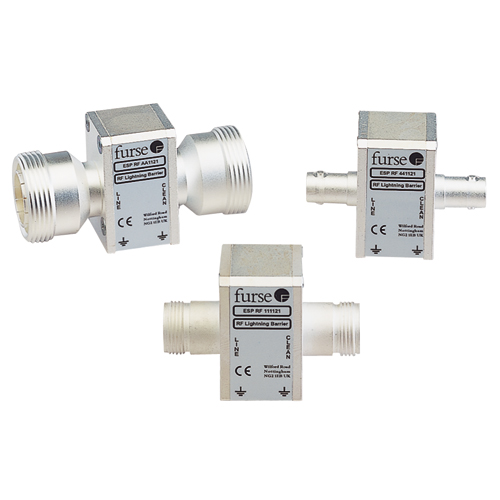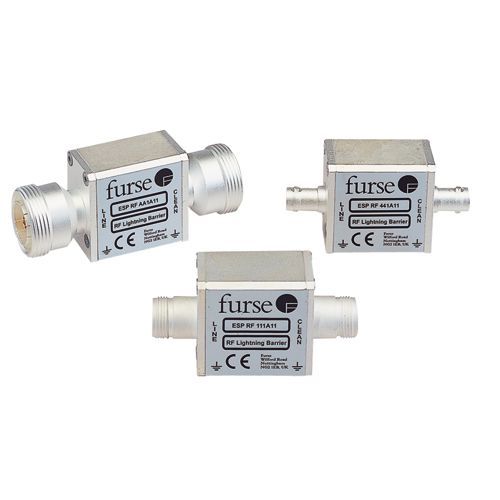FURSE ESP Signal SPD systems using coaxial cables

Product Name:FURSE ESP Signal SPD systems using coaxial cables
Product Model:ESP RF 111x21,ESP RF AA1x21,ESP RF 441x21,ESP RF 111A11,ES
Updated:2010.04.08
Views:2

Protectors for RF systems using coaxial cables at frequencies between DC and 2.7GHz 33
The standard RF protector offers a cost effective protection solution for use on coaxial cables to protect RF transmitter and receiver systems, including electronics located at the antenna or dish. Typical examples include cell sites, military communications, satellite earth stations and pager systems.
| Product part codes: | |
| ESP RF 111x21 | With N female connectors |
![]()
|
 |
Protectors for RF systems using coaxial cables at frequencies between DC and 2.7GHz 34
The standard RF protector offers a cost effective protection solution for use on coaxial cables to protect RF transmitter and receiver systems, including electronics located at the antenna or dish. Typical examples include cell sites, military communications, satellite earth stations and pager systems.
| Product part codes: | |
| ESP RF AA1x21 | With 7/16 DIN female connectors |
![]()
|
 |
Protectors for RF systems using coaxial cables at frequencies between DC and 2.7GHz 35
The standard RF protector offers a cost effective protection solution for use on coaxial cables to protect RF transmitter and receiver systems, including electronics located at the antenna or dish. Typical examples include cell sites, military communications, satellite earth stations and pager systems.
| Product part codes: | |
| ESP RF 441x21 | With BNC female connectors |
![]()
|
 |
Higher specification protectors for RF systems using coaxial cables at frequencies between 50MHz and 2.7GHz 21
Use on coaxial cables to protect RF transmitter and receiver systems, including electronics located at the antenna or dish. Typical examples include cell sites, military communications, satellite earth stations, pager systems and emergency services communications systems
| Product part codes: | |
| ESP RF 111A11 | With N female connectors |
| ESP RF AA1A11 | With 7/16 DIN female connectors |
| ESP RF 441A11 | With BNC female connectors |
![]()
|
 |
